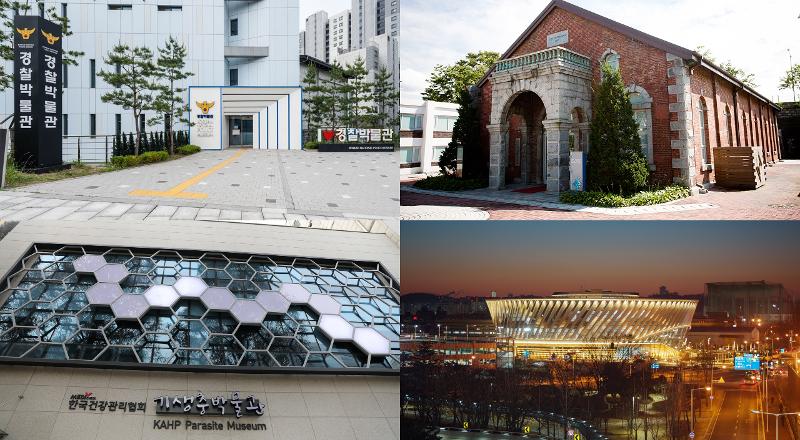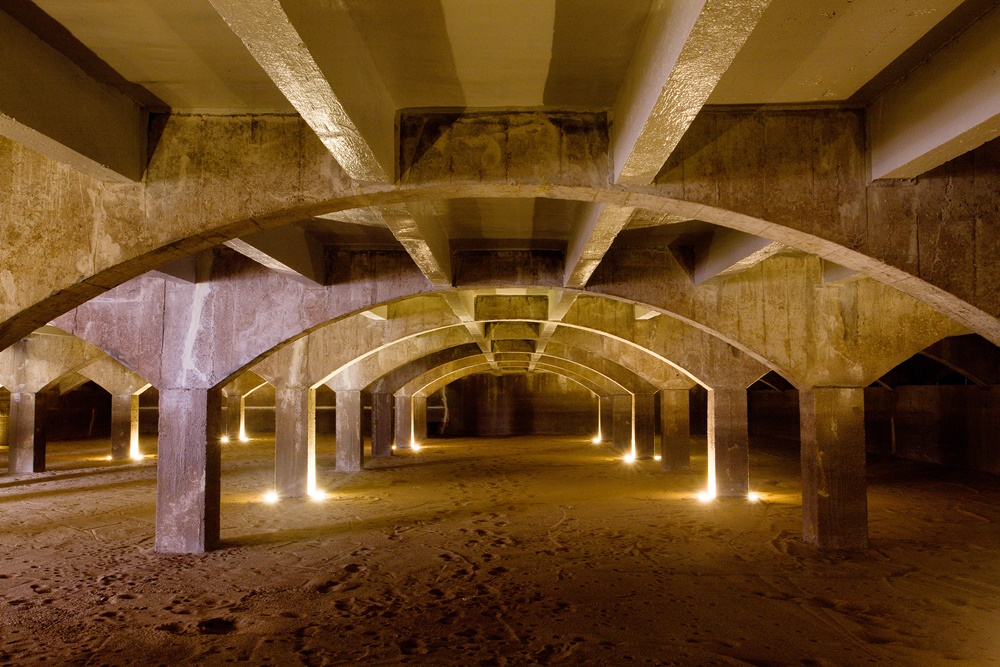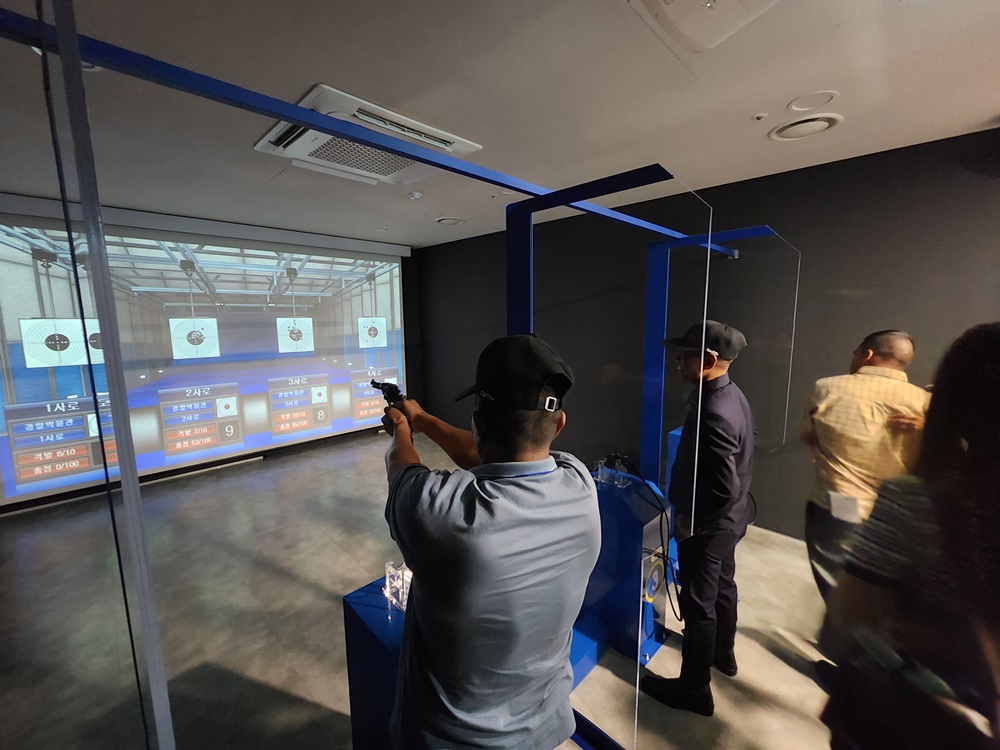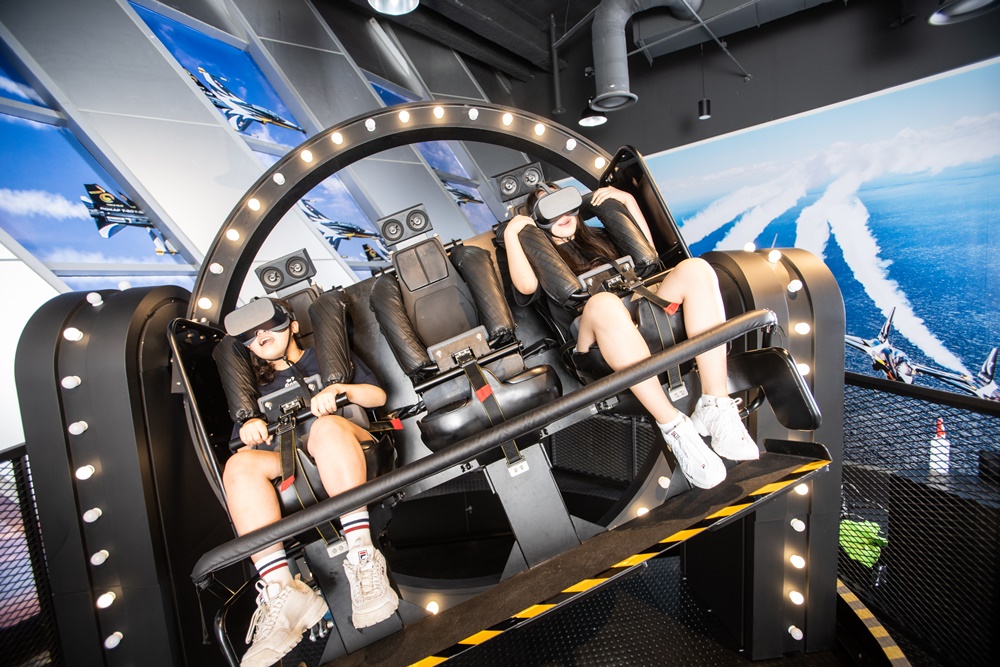
Clockwise from left are Korean National Police Museum, Waterworks Museum, National Aviation Museum of Korea and KAHP Parasite Museum.
By Lee Jihae
Korea has museums that make one think, "Wow, do such places like this really exist?" Several museums nationwide are like treasures in displaying unique themes that surprise visitors.
Korea.net introduces four museums with useful information and a lot of fun. They offer free admission but more importantly an abundance of interesting things to see and do. For those who think museums are boring, try going to these.
Waterworks Museum
This museum specializing in waterworks was born after the nation's first water purification plant at Ttukdo Reservoir was renovated. Visitors can learn about the history and process of the water purification system in Seoul.
The museum comprises the main building, slow sand filtration basin, a water and environment exhibition, outdoor interactive facilities and Ttukdo Water Arisu Purification Center.
A popular section here is the filtration basin, which was used from 1908-90 to allow water from the Hangang River to slowly pass through sand and gravel layers. The microorganisms inside these layers were used to filter out impurities or bacteria in the water.
The basin is the nation's oldest standing concrete structure and designated tangible cultural heritage.

The slow sand filtration basin at Waterworks Museum was used to let water from the Hangang River pass through sand and gravel layers, with microorganisms in these layers used to filter out impurities and germs in the water. (Waterworks Museum)
Visitors can also draw water from the outdoor pumps and wells at the museum, which is also connected to Seoul Forest. So going to the forest and the museum on the same day is also recommended.
Address: 27, Wangsimni-ro, Seongdong-gu District, Seoul
Opening hours: 9 a.m. to 6 p.m. (weekdays and weekends)
Closed: Mondays, Jan. 1, Seollal (Lunar New Year) and Chuseok (Korean Thanksgiving) Day
*If a public holiday falls on a Monday, the museum is open that Monday and closed on Tuesday
Admission: free
This space preserves the history of the nation's police and allows visitors to experience police activities. Information on police here include changes in police uniforms and badges over time and police ranks and categories like guard, traffic and forensic police.

This simulation shooting range is at the Korean National Police Museum. (Korean National Police Museum)
A photo zone allows visitors to wear police uniforms and take photos. The highly popular simulation shooting range has no real bullets, but when a visitor shoots the screen with the provided gun, bullet marks appear on the screen target. This activity is limited to people age 11 or older for educational and safety purposes.
Address: 162, Songwol-gil, Jongno-gu District, Seoul
Opening hours: 9:30 a.m. to 5:30 p.m. (last entry at 5 p.m.)
Closed: Mondays, Jan. 1, Seollal (Lunar New Year) and Chuseok (Korean Thanksgiving) Day
*If a public holiday falls on a Monday, the museum is open that Monday and closed on Tuesday
Admission: free
National Aviation Museum of Korea
Featuring a plethora of airplanes, this museum is right next to Gimpo International Airport, so visitors can see planes land and take off to their heart's content. Great for the family, the facility features aviation history both in Korea and abroad, plus interactive programs for boarding, piloting, flight control, in-flight training, aviation leisure sports and experiential airport for children.
The most popular program here is the interactive section of the Black Eagles, the Republic of Korea Air Force's aerobatic team. Fully experience the thrilling aerial art of the Black Eagles on a virtual reality screen showing the view from a fighter jet cockpit and a ride that moves around 360 degrees to recreate the plane's movements.

The National Aviation Museum of Korea has a ride that moves around 360 degrees and uses a virtual reality screen to simulate the flying experience of the Black Eagles, the Republic of Korea Air Force's aerobatic team. (National Aviation Museum of Korea).
The in-flight training program offers visitors safety and evacuation training and a set simulates the interior of an airplane. Visitors can learn from former flight attendants how to open an emergency door, ride an evacuation slide and wear a life jacket.
The interactive section for piloting and flight control has simulators of an airliner cockpit and the control tower of Incheon International Airport. The urgent and lifelike experience comes alive as visitors can communicate with the tower in an emergency and help planes take off or land safely. Former pilots are on site to provide explanations.
Address: 177, Haneul-gil, Gangseo-gu District, Seoul
Opening hours: 10 a.m. to 6 p.m. (last entry at 5:30 p.m.)
Closed: Mondays, Jan. 1, Seollal (Lunar New Year) and Chuseok (Korean Thanksgiving)
*If a public holiday falls on Monday, the museum is open that Monday and closed on Tuesday
Admission: free
KAHP Parasite Museum
KAHP (Korea Association of Health Promotion) Parasite Museum is the nation's first and only place to display parasites. Featuring types of the bugs, the facility houses old documents on parasites, history of human efforts to eradicate them, and real samples of the critters from both home and abroad.
This corner at KAHP Parasite Museum shows how students in the 1970s had to submit stool samples at school to check for parasites. (KAHP Parasite Museum)
One corner shows how students in the 1970s had to submit stool samples at school to check for parasites.
The second exhibition hall has a section where visitors can wear lab robes and look through microscopes to observe parasites for better understanding of them and life sciences.
Address: 333 Hwagok-ro, Gangseo-gu District, Seoul
Opening hours: 10 a.m. to 4 p.m. (last admission at 3:40 p.m.)
Closed: Sundays and national holidays, museum's founding day
Admission: free
jihlee08@korea.kr
